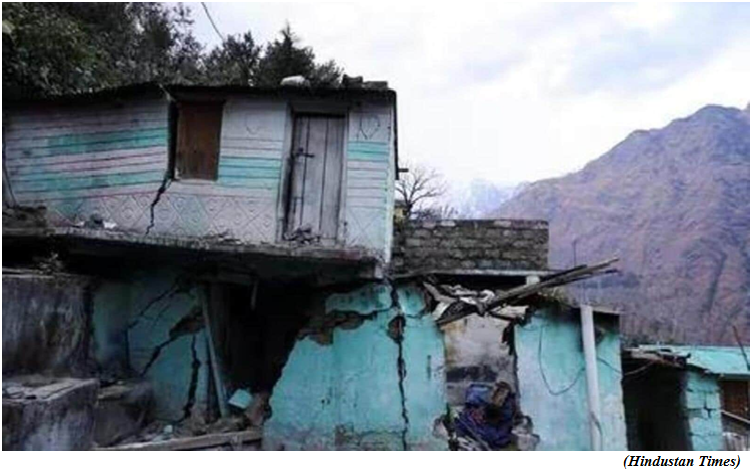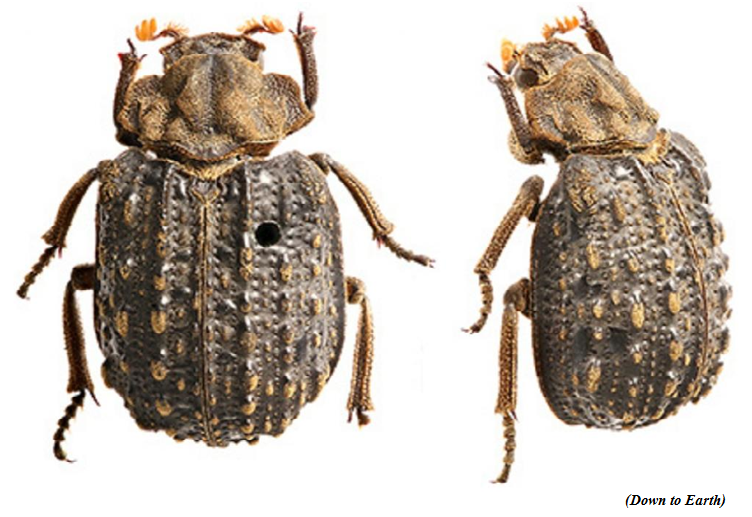HAL to provide maintenance and overhaul support for MQ 9B drone engines in India (GS Paper 3, Defence)

Why in news?
- The Hindustan Aeronautics Ltd. (HAL) and General Atomics are looking to formulate a comprehensive engine maintenance, repair and overhaul (MRO) programme for the upcoming HALE RPAS projects.
Details:
- As India looks to purchase armed Predator Remotely Piloted Aircraft Systems (RPAS) from the U.S., (HAL) and General Atomics announced at Aero India that the turbo-propeller engines that power the MQ-9B Guardian High Altitude Long Endurance (HALE) RPAS will be supported by the HAL engine division for the Indian market.
- HAL has been manufacturing and providing MRO support for TPE 331-5 engines for the past 40 years. It is also establishing facilities for manufacturing TPE 331-12B engines for HTT-40 project.
- The engine used on the MQ-9B RPAS belongs to the same family of engines with upgraded configuration to adapt to the RPAS technology.
HAL &HENSOLDT:
- In another announcement, HAL and Germany-based HENSOLDT announced a collaboration agreement covering design/IPR Transfer for design and manufacturing of Obstacle Avoidance System (OAS) for Indian helicopters, primarily the Advanced Light Helicopter (ALH), and future exports.
Background:
- The Indian Navy operates two MQ-9B Sea Guardians taken on lease in 2020. A larger deal for 30 armed MQ-9Bs, 10 for each Service, is pending.
- In 2021, the Defence Ministry ordered a reassessment of the requirements of the deal estimated at around $3 billion.
MQ9B Sea Guardian:
- It is the maritime variant of the Predator MQ9 Unmanned Aerial Vehicle (UAV).
- It has a maximum endurance of 40 hours and a maximum flying altitude of 40,000 feet.
- It has a 3600 maritime surveillance radar and an optional multimode maritime surface search radar.
- It can be used in operations such as Anti-Surface Warfare, Anti-Submarine Warfare, Humanitarian Assistance/Disaster Relief, Search and Rescue, Law Enforcement (Drug Trafficking, Illegal Immigration and Piracy), etc.
Uttarakhand firms up Joshimath relief plan
(GS Paper 3, Disaster Management)
Why in news?
- The Uttarakhand Cabinet recently approved a proposed policy to offer compensation to people who lost their land and buildings due to land subsidence in Joshimath town.

Details:
- The policy was based on cost, options and conditions.
- The rate of compensation for residential buildings would be calculated by applying the cost index to the plinth area rates of the Central Public Works Department. The final compensation would be calculated after the deduction of depreciation for the affected building from the cost of the upcoming building.
- A similar form of relief could be paid for commercial structures for which the government had created five different slabs.
Key Highlights:
Three options:
- For the permanent rehabilitation of disaster-affected families, the government is offering them three options.
- The first is opt for compensation.
- In the second option, the affected person or family can seek land from the government and compensation for the damaged building. Land measuring up to 75 square metres (50 metres for building construction and 25 metres for cow shed and other works) would be provided for the construction of a residential building.
- In the third option, a person or family can demand a residential building constructed relative to his land and building. Buildings will be constructed by the State government on land up to a maximum area of 50 sq.m, with 25 sq.m for cow sheds and other works.
Commercial establishments:
- In case the owner wants the government to build a shop or other commercial establishment such as a hotel or a dhaba, he or she could opt to get compensation for the damaged commercial building or shop at the prescribed rate, and compensation for land at rates to be determined in the future on the basis of reports from technical institutions.
- If the affected person wanted the government to build a shop or business establishment, then it would be made available by the State government on land up to a maximum area of 15 sq. m. at the identified site. If a person in Joshimath who has been working in the disaster-affected area of Joshimath for more than one year by taking a shop on rent and due to the disaster both the land and the building of the shop/business establishment is unsafe, his employment has been affected. If so, such persons will be provided a one-time financial assistance of ₹2 lakh.
Understanding India’s Mental Healthcare Act, 2017
(GS Paper 2, Health)
Why in news?
- The National Human Rights Commission (NHRC) in a report flagged the “inhuman and deplorable” condition of all 46 government-run mental healthcare institutions across the country.
- The report notes that the facilities are “illegally” keeping patients long after their recovery, in what is an “infringement of the human rights of mentally ill patients”.
- These observations were made after visits to all operational government facilities, to assess the implementation of the Mental Healthcare Act, 2017 (MHA).

What does the MHA, 2017 say?
- The MHA, 2017 centered the agency of individuals, acknowledged their right to live as part of a community (under Section 19), and focused on rehabilitation.
- Under Section 19 of the Act, the government was made responsible for creating opportunities to access less restrictive options for community living — such as halfway homes, sheltered accommodations, rehab homes, and supported accommodation.
- The Act also discourages using physical restraints (such as chaining), unmodified electro-convulsive therapy (ECT), and pushes for the right to hygiene, sanitation, food, recreation, privacy, and infrastructure.
- Additionally, under Section 5, people are empowered to make “advance directives”. They can nominate a representative for themselves, thereby potentially helping to eliminate absolute forms of guardianship in favour of supported decision-making. This is barring cases where the person needs a higher degree of care and support.
- The Act acknowledged that external factors such as income, social status, and education impact mental well-being, and therefore, recovery needs a psychiatric as well as a social input.
What are the challenges?
- While the MHA safeguards the rights of people in mental healthcare establishments, enforcement challenges remain. Almost 36.25% of residential service users at state psychiatric facilities were found to be living for one year or more in these facilities.
- Under the MHA, all States are required to establish a State Mental Health Authority and Mental Health Review Boards (MHRBs), bodies that can further draft standards for mental healthcare institutes, oversee their functioning and ensure they comply with the Act.
- In a majority of States, “these bodies are yet to be established or remain defunct. Further, many States have not notified minimum standards which are meant to ensure the quality of MHEs.
Access to rehabilitation:
- Poor budgetary allocation and utilisation of funds creates a scenario where shelter homes remain underequipped, establishments understaffed, and professionals and service providers not adequately trained to deliver proper healthcare.
- While Section 19 recognises the right of people to “live in, be part of, and not be segregated from society,” there have been no concrete efforts towards implementation. The dearth of alternative community-based services further complicates access to rehabilitation.
‘Omorgus Khandesh’, a newly discovered Indian beetle
(GS Paper 3, Environment)
Why in news?
- Recently, a new beetle species has been discovered in India. The beetle is important for forensic science as it helps detect the time of death of an animal or human.
- The bug was discovered by scientist Aparna Sureshchandra Kalawate who works with Zoological Survey of India, Western Regional Centre (WRC), Pune.

Key Features:
Keratin beetle:
- Omorgus Khandesh is necrophagous and is, therefore, also called a keratin beetle. During the decomposition of a body, blowflies are amongst the first ones to arrive in the early stages.
- Meanwhile, the final successional stage is with the arrival of the keratin feeders, thus their importance in forensic science.





